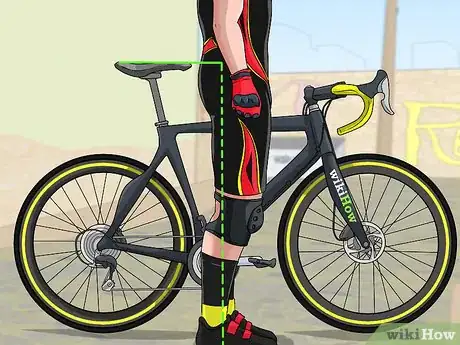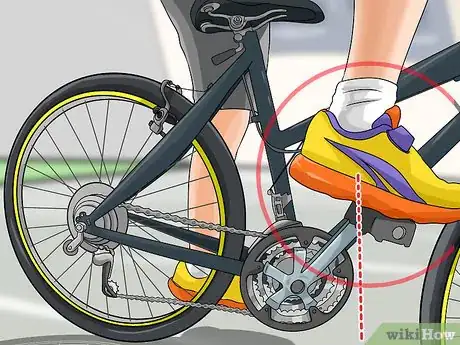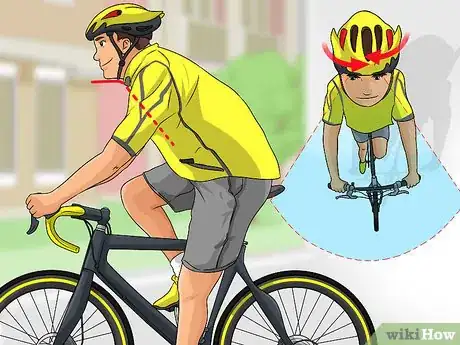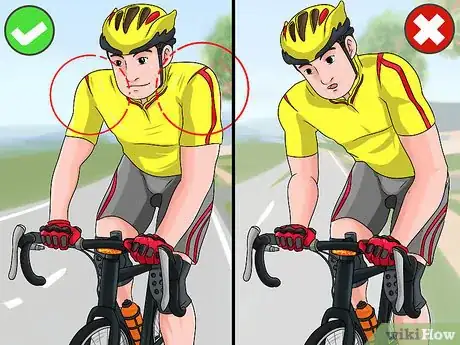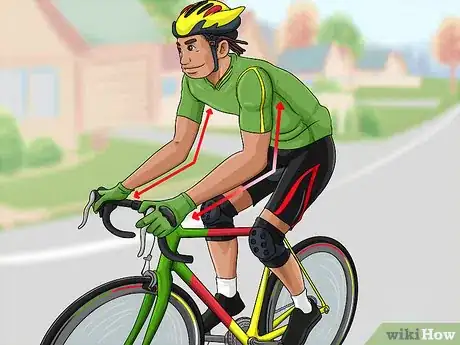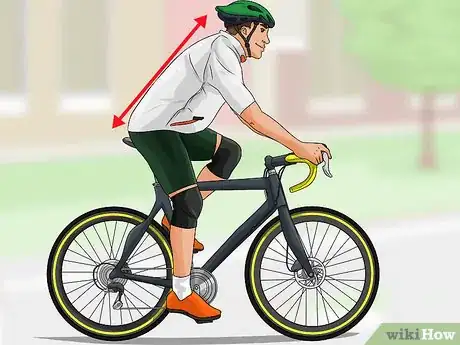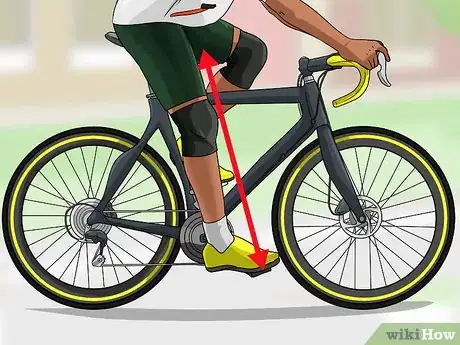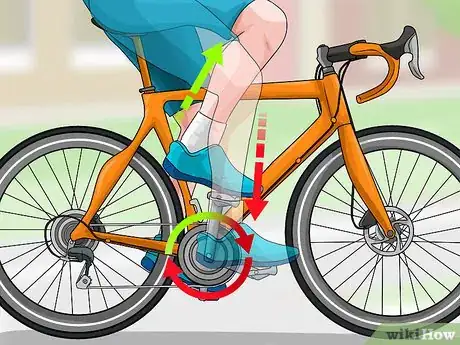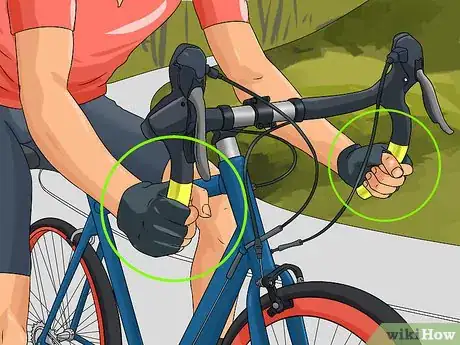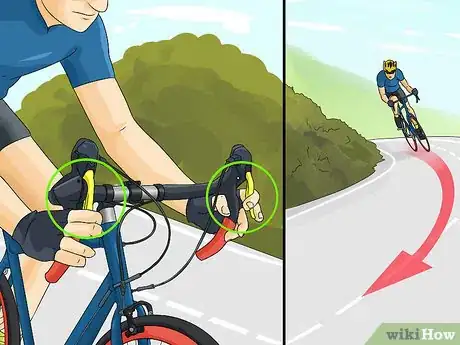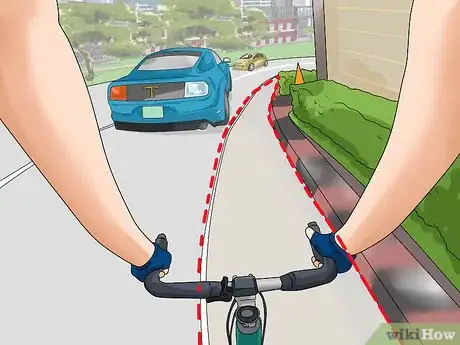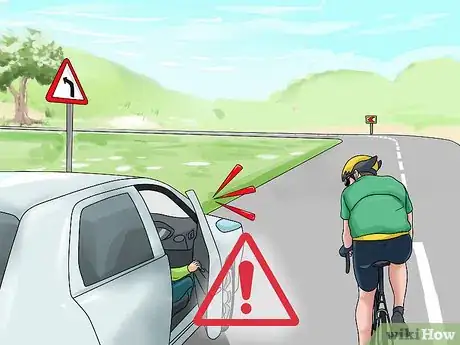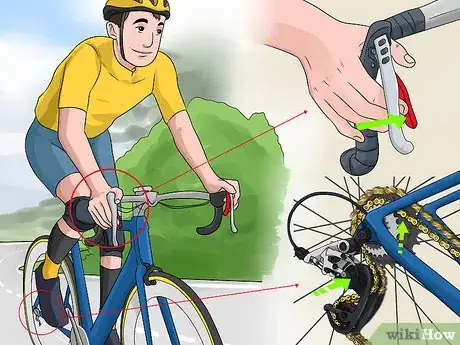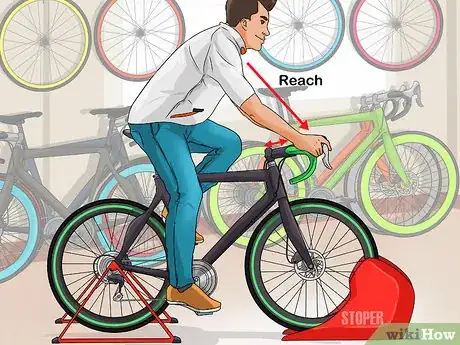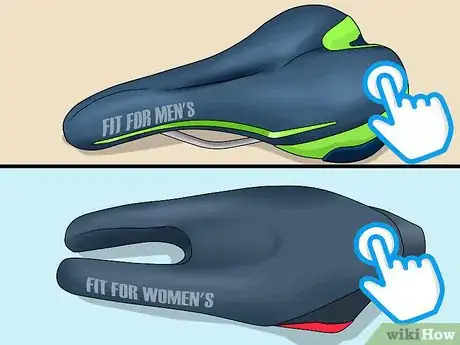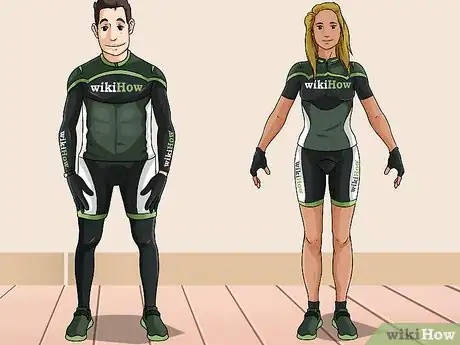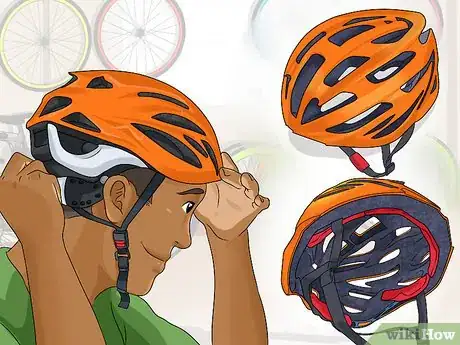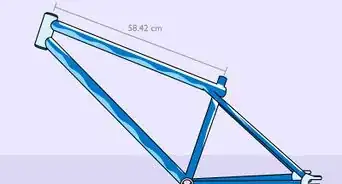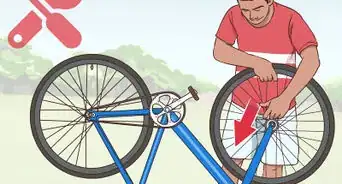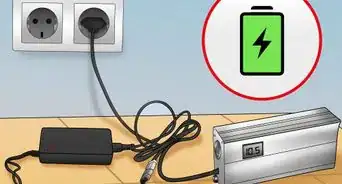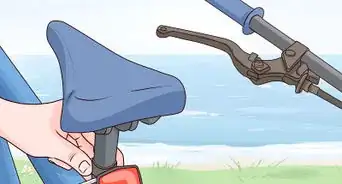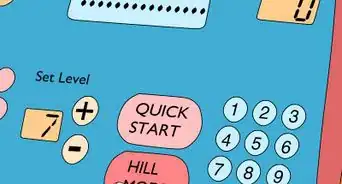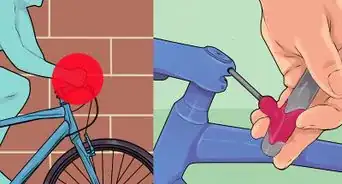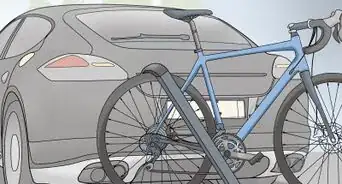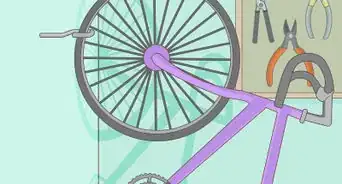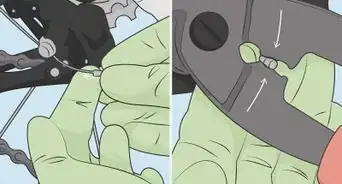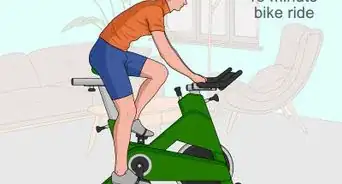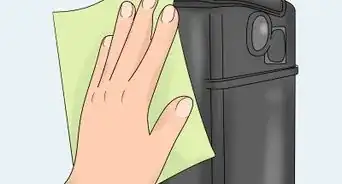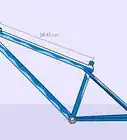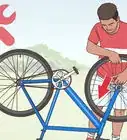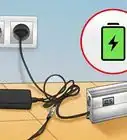This article was co-authored by Ikaika Cox. Ikaika Cox is the Shop Director at the Salt Lake City branch Bicycle Collective in Salt Lake City, Utah. He has been a bike mechanic since 2012, beginning as a volunteer with the Provo Bicycle Collective, and growing and honing his skills as a bicycle mechanic and educator in multiple Bicycle Collective locations over the years. He now leads the Salt Lake City branch of the Bicycle Collective.
There are 11 references cited in this article, which can be found at the bottom of the page.
This article has been viewed 59,017 times.
Road biking is a great hobby and an even better workout. You may have ridden a bike a lot as a kid, but riding a road bike requires different positioning and technique. Keeping your body loose but aligned well is the most important thing when you ride. You’ll also want to use the lower handlebars that road bikes offer and learn to brake early. Lastly, make sure you find a bike and saddle that fit right and always wear tight clothes.
Steps
Positioning Your Body
-
1Raise the saddle to about hip level. The saddle of a road bike is adjustable to your height. Stand up straight beside the bike, holding it steady. Raise or lower the saddle so it is level with your hips. Sit on the saddle and straighten one leg on the pedal. If you can do it, then the saddle is at the right height.[1]
- With the seat adjusted properly, you should be able to extend each leg and pedal without rocking to either side.
-
2Position the pedals horizontally before you mount the bike. Before you climb onto the saddle, position the pedals so they’re lined up horizontally. This helps you get more power out of your downstroke when you start pedaling.[2]
- This is the most useful position to start riding because it allows you to smoothly mount and push into a downward stroke of the pedal.
- It’s also okay to position the pedals diagonally from one another as long as they’re not in the vertical position.
Advertisement -
3Look forward and keep your head up. Your neck should not be tense but don’t hang your head down either. It’s important to be looking ahead of you for safety reasons, but also so your neck is comfortable. Extend your neck and slightly lower your chin.
- Use your peripheral vision to check the sides.
- Gently move your head around sometimes so your neck doesn’t stiffen up.
-
4Allow your shoulders to hang relaxed. Avoid hunching forward with your shoulders tensed up. Let them hang and shrug them every so often to loosen them again. Learn to tell yourself on occasion to loosen your shoulders, as you’ll probably tense them over time.[3]
- Your neck and shoulders are closely connected, so tilt your head to each side when you shrug your shoulders to loosen any tension in the neck muscles.
-
5Ride with your elbows bent. You’ll be tempted to straighten your elbows sometimes, but this puts extra tension on your arm muscles. Keep the elbows close to your body rather than splayed out. Bent elbows also help absorb the shock of bumps, which can injure you if you keep your arms locked straight.[4]
-
6Keep your spine bowed slightly. Keeping your spine bowed helps activate your core muscles to support your upper body. Lean slightly forward in your seat, making sure not to rest on any bones.[5]
-
7Align your knees over your feet. Position yourself forward or backward on the saddle so there is a vertical line from your knees to the center of the pedal spindle. If your knees are too far forward, then scoot back. If your knees are behind your feet, scoot forward. Keep your knees directly above your feet.[6]
Working on Riding Techniques
-
1Move your knees straight up and down as you pedal. Resist the urge to bow your knees outward. It makes your pedaling less efficient and puts more strain on your knees. Drive the pedals straight downward and pull your knees straight upward as you cycle.[7]
-
2Hold the drop bars when you’re going downhill. Road bike handlebars offer three main positions, with the lower curved portion being called the drops. Holding them shifts more of your weight onto the front wheel, which helps balance the bike when you’re heading downhill.[8]
- Holding onto the drops lowers your upper body, which creates better aerodynamics, as well.
-
3Begin braking before you get to a curve. You may be traveling at high speeds on your road bike, but you’ll want to slow down for some corners. Braking during a turn can cause you to skid and wreck, so check your speed before a turn. Slow down on straightaways while your bike is straight up.[9]
- The same point applies to stops. Begin braking early so you don’t have to squeeze your brakes hard for a sudden stop. Make sure to squeeze each brake evenly so you aren’t relying on one more than the other.
-
4Ride in the rightmost lane in the same direction as the traffic. You may think it’s best to ride so you can see the oncoming traffic, but riding with the traffic is safer. Stay as far to the right as you can, and ride on the shoulder of the road if the surface is smooth enough.[10]
- Bicycle traffic laws may vary depending on where you live. Make sure to familiarize yourself with the rules in your area.
-
5Pay attention to your surroundings. It’s important to always watch for drivers, other riders, and pedestrians as you ride. Check behind you when you are changing lanes or turning. Watch out for parked cars, road construction, or other obstacles. Seeing what’s ahead of you will give you more time to react to it.[11]
-
6Practice shifting gears to maintain your momentum. Shift your back gears as you speed up. Shift your front gears as the terrain changes, like at the bottom of the hill you’re about to ride up. Remember that the left shifter changes the larger cogs by your pedals. The right shifter changes the smaller cogs on the back wheel.[12]
Gearing up for the Ride
-
1Search for a bike shape that fits you. Bikes have different shapes and sizes, just like people do. If you have the option, go to a bike shop and work with the bike pro to find the right fit. You want it to be tall enough for you, with handlebars that are at the right height. Test some bikes out to see how they feel when you ride them.
- An improperly fitted bike will cause you to hunch forward too much or make your legs feel cramped.
-
2Select a comfortable saddle. You’ll mostly be sitting on the bike when you ride it, so a saddle, or seat, that feels comfortable to you is important. There are different saddle designs for men and women, as well as ones that are streamlined or wider. Test saddles in a bike store to see what feels best to you.[13]
- Your budget affects the saddle that you’ll choose. If you want to stick with the cheap option that comes with the bike, feel free.
- Saddles can be supplemented with pads or a cushion, as long as it doesn’t hinder your ability to ride the bike smoothly.
-
3Wear tight clothing that fits you well. The clothes you wear help you ride comfortably and efficiently. It’s good to wear tight clothes so you reduce friction from the wind. Tight clothes are less likely to get caught in the chains. Clothes designed for cycling are ideal over casual clothes.[14]
- Make sure you choose an outfit that fits you because if it is too tight you won’t be comfortable.
-
4Choose a helmet to wear. Since your head is most at risk if you crash, always wear a helmet when you ride. Make sure it fits the shape of your head well, is padded the way you like, and looks stylish to you. Tighten the helmet so it fits snugly on your head when you ride.[15]
- Many helmets can be adjusted in various ways, so pick one that is flexible.
- Style may not seem important to you, but if you buy a helmet that you think looks dumb, you’ll never want to wear it. Find a helmet that you feel good about wearing.
References
- ↑ https://totalwomenscycling.com/road-cycling/technique/beginner-road-tips-chris-boardman
- ↑ https://totalwomenscycling.com/road-cycling/technique/beginner-road-tips-chris-boardman
- ↑ http://www.strongher.cc/news/shouldertension
- ↑ http://www.bicycling.com/training/bike-skills/101-ways-completely-transform-your-entire-cycling-life
- ↑ https://www.liv-cycling.com/global/campaigns/proper-body-position-on-a-road-bike/20716
- ↑ https://www.liv-cycling.com/global/campaigns/proper-body-position-on-a-road-bike/20716
- ↑ https://www.liv-cycling.com/global/campaigns/proper-body-position-on-a-road-bike/20716
- ↑ https://totalwomenscycling.com/road-cycling/technique/ask-expert-riding-drops-road-bike
- ↑ http://www.cyclingweekly.com/fitness/training/bike-handling-techniques-improve-cornering-148960
- ↑ http://bikeleague.org/content/rules-road-0
- ↑ http://bikeleague.org/content/rules-road-0
- ↑ http://www.active.com/cycling/articles/3-shifting-tips-for-rookie-cyclists
- ↑ https://totalwomenscycling.com/road-cycling/road-cycling-and-the-search-for-saddle-supremacy#dOsxwADkjQCs3wr2.97
- ↑ http://www.self.com/story/allison-tetricks-guide-to-road-bikes
- ↑ http://www.roadbikereview.com/reviews/10-tips-to-avoid-looking-like-a-cycling-rookie
About This Article
To ride a road bike, start by adjusting the saddle so its at hip height when you stand next to the bike. Once you start cycling, pedal efficiently by moving your knees straight up and down. You should also keep your head up so you can see what's going on in front of you. Additionally, hold your arms slightly bent to avoid straining your muscles. If you're approaching a curve, start braking before you reach it to give yourself time to slow down. For tips on how to shift gears while riding, keep reading!
